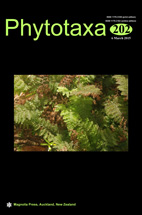Abstract
The type species of the genus Tiarosporella, T. paludosa, is epitypified and confirmed as a member of the Botryosphaeriaceae. Based on morphology and DNA sequence data of the large subunit nuclear ribosomal RNA gene (LSU, 28S) and the internal transcribed spacers (ITS) and 5.8S rRNA gene of the nrDNA operon, the genus Tiarosporella is shown to be poly- and paraphyletic. A group of isolates morphologically similar to T. paludosa cluster to the Phacidiaceae (Phacidiales, Leotiomycetes) and we accommodated them in Darkera, a genus associated with needle diseases of conifers, with D. picea introduced as a novel taxon. This new taxon includes isolates occurring on needles of Picea spp. in Europe (Finland, Norway and Switzerland) and differs from D. parca according to a five-locus alignment consisting of ITS, LSU, partial 18S nuclear ribosomal RNA, translation elongation factor 1-alpha and beta-tubulin genes. Four novel genera are introduced for tiarosporella-like fungi, namely Eutiarosporella based on E. tritici on Triticum aestivum from South Africa, Marasasiomyces based on M. karoo on Eriocephalus sp. from South Africa, Mucoharknessia based on M. cortaderiae on Cortaderia selloana from Argentina, and Sakireeta based on S. madreeya on Aristida setacea from India. Together with the genus Botryobambusa, these genera represent a subclade in the Botryosphaeriaceae that is ecologically diverse, occurring on Poaceae, as well as woody hosts, including endophytes, saprobes, and plant pathogens.

